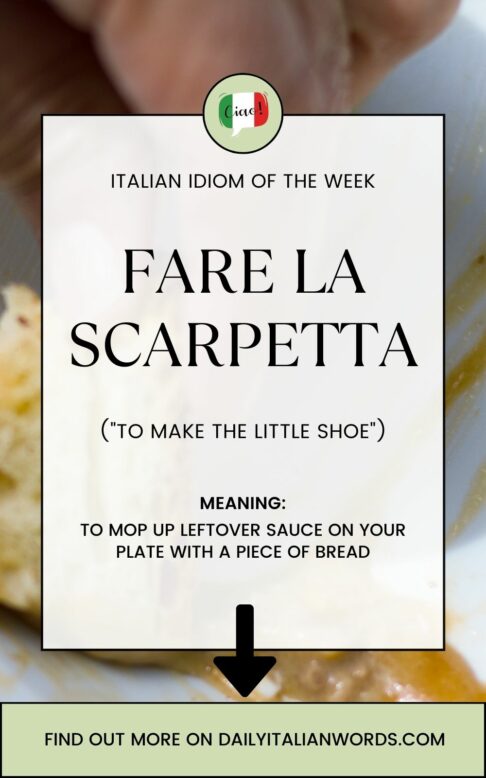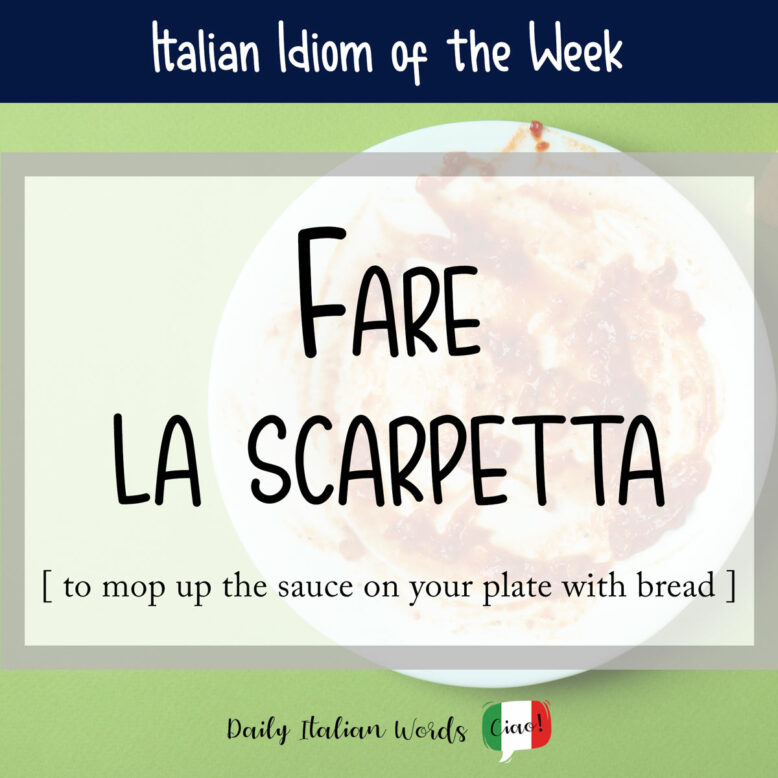Scarpetta in Italian is the diminutive of scarpa, the word for shoe or boot. It refers to any small shoe including a child’s shoe, a small and elegant shoe that ladies wear, or a flat sports shoe made of light and flexible material such as canvas or rubber.

The idiomatic expression fare la scarpetta (lit: to do/make the small shoe) has quite a different meaning however! Quite simply, it refers to the act of soaking up leftover sauce on a plate using a piece of bread (pane) either held between the fingers or on the end of a fork.

Faccio la scarpetta per pulire bene il piatto.
I’m scooping up the sauce with a piece of bread to clean the plate well.
The origin of this expression is unclear, but there are various theories.
One is that the bread moving around the surface of the plate is like a shoe dragging on the street, picking up dirt in the process.
Another cites the similarity to the word scarsetta which means poverty, and the idea that poor people must settle for the scarce leftovers on other people’s plates. A variation on this draws a comparison between the inelegant action of “doing the scarpetta” and the low value of a lightweight shoe.
A third hypothesis suggests that the piece of bread being pushed around by a finger resembles a shoe with a leg. (Yes, this interpretation requires a bit of imagination!)
Finally, others think that scarpetta recalls a type of pasta whose concave shape was supposed to make it easier to collect the leftover sauce.
Whether any of these theories are true or not, nobody knows for sure! Chi lo sa! (Who knows!)
Anyway, if you want to learn how to do the scarpetta properly, here is a funny video from the Italian comedy channel Casa Surace. Enjoy!

Heather Broster is a graduate with honours in linguistics from the University of Western Ontario. She is an aspiring polyglot, proficient in English and Italian, as well as Japanese, Welsh, and French to varying degrees of fluency. Originally from Toronto, Heather has resided in various countries, notably Italy for a period of six years. Her primary focus lies in the fields of language acquisition, education, and bilingual instruction.


